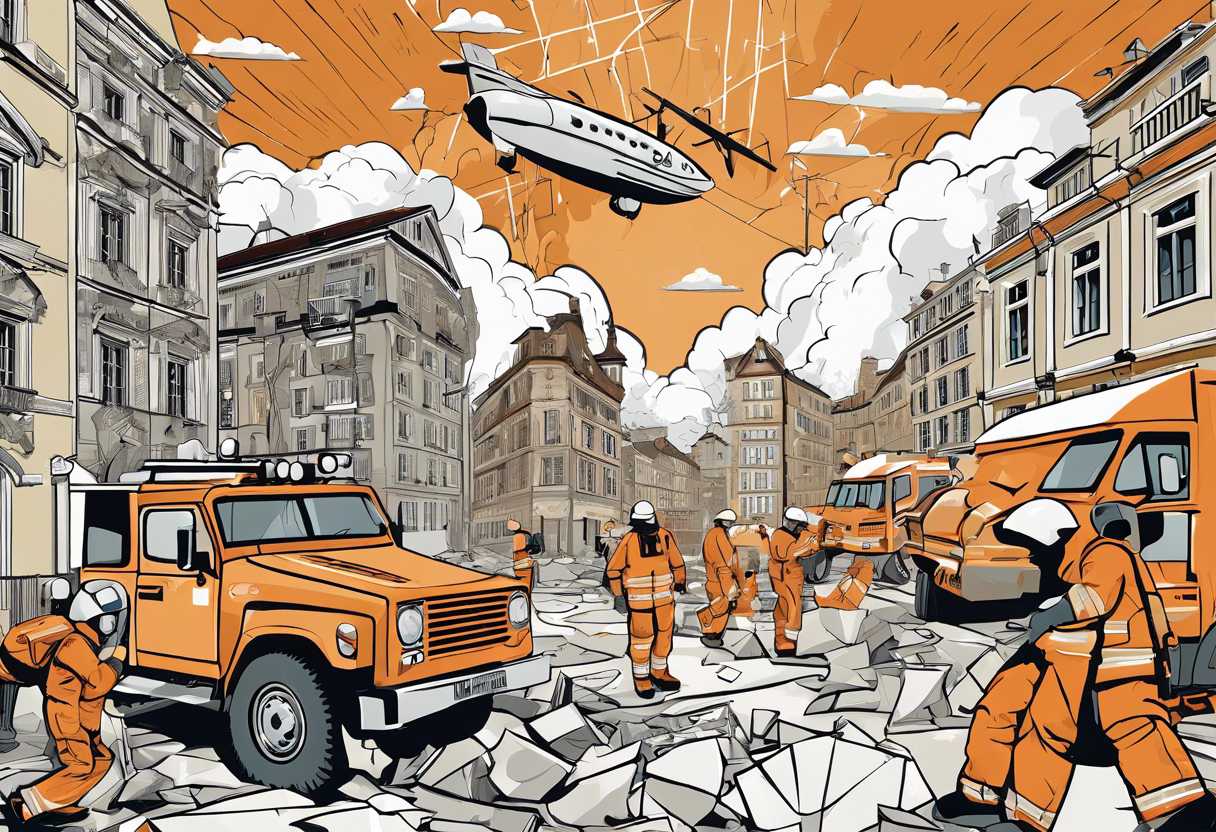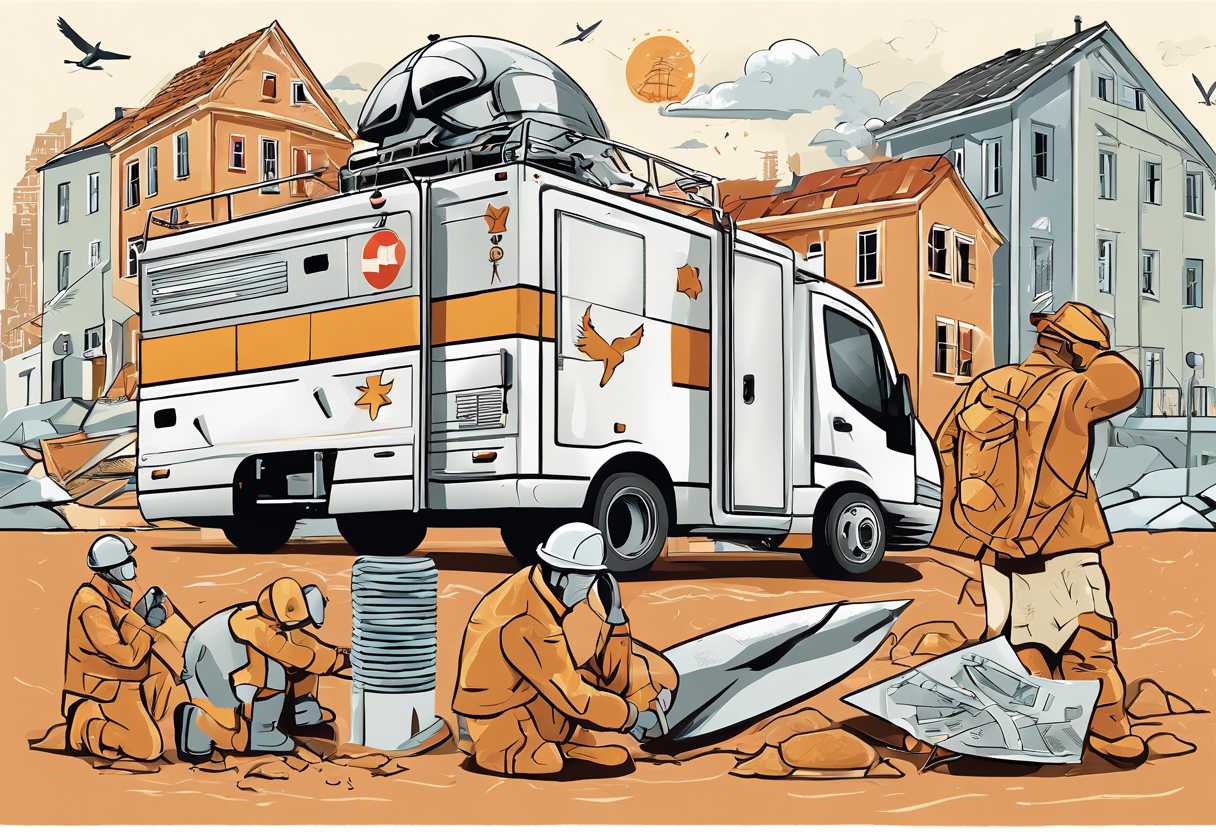European Disaster Risk Management is a critical aspect of ensuring the safety and resilience of communities across the continent. In this blog post, we will delve into the key components and strategies that underpin effective European Disaster Risk Management, as well as the role of technology in enhancing these efforts. We will also explore the collaborative efforts and partnerships that are essential in this field, along with the future challenges and opportunities that lie ahead. Understanding the importance of European Disaster Risk Management is crucial for building a sustainable and secure future for all.
Understanding the Importance of European Disaster Risk Management
The Role of European Disaster Risk Management
European Disaster Risk Management plays a crucial role in ensuring the safety and well-being of citizens across the continent. By identifying, assessing, and mitigating potential risks, disaster risk management helps to minimize the impact of natural and man-made disasters, ultimately saving lives and protecting infrastructure.
Key Components of European Disaster Risk Management
One of the key components of European Disaster Risk Management is the establishment of early warning systems. These systems are designed to provide timely and accurate information about potential hazards, allowing authorities to take proactive measures to protect communities. Additionally, disaster risk management involves the development of comprehensive risk assessments, which help to identify vulnerable areas and populations, as well as the implementation of measures to reduce risk and enhance resilience.
The Benefits of Effective Disaster Risk Management
Effective disaster risk management offers a wide range of benefits, including the protection of lives, property, and critical infrastructure. By investing in risk reduction and preparedness measures, European countries can minimize the economic and social impact of disasters, as well as reduce the burden on emergency response and recovery efforts. Furthermore, disaster risk management contributes to sustainable development by promoting resilience and adaptation to climate change, ultimately creating safer and more resilient communities.

Key Components of Effective European Disaster Risk Management Strategies
Risk Assessment and Monitoring
One of the key components of effective European disaster risk management strategies is the thorough assessment and monitoring of potential risks. This involves identifying and analyzing the hazards that could lead to disasters, as well as evaluating the vulnerability and exposure of communities and infrastructure. By continuously monitoring these risks, authorities can better understand the evolving nature of disasters and take proactive measures to mitigate their impact.
Preparedness and Response Planning
Another crucial aspect of effective disaster risk management is preparedness and response planning. This involves developing comprehensive plans and protocols for responding to various types of disasters, including natural hazards, technological accidents, and pandemics. It also includes conducting regular drills and exercises to test the effectiveness of these plans and ensure that all relevant stakeholders are well-prepared to respond in the event of a disaster.
Coordination and Collaboration
Effective disaster risk management strategies also emphasize the importance of coordination and collaboration among various stakeholders, including government agencies, non-governmental organizations, and the private sector. By working together, these entities can pool their resources and expertise to develop more comprehensive and integrated approaches to disaster risk management. This can also help ensure that response efforts are well-coordinated and that resources are allocated efficiently in the aftermath of a disaster.

The Role of Technology in Enhancing European Disaster Risk Management
Improving Early Warning Systems
One of the key ways technology is enhancing disaster risk management in Europe is through the improvement of early warning systems. Advanced weather monitoring technologies, such as satellite imagery and radar systems, allow for more accurate and timely predictions of natural disasters such as floods, storms, and wildfires. This enables authorities to issue warnings to the public and take necessary precautions to minimize the impact of these events.
Enhancing Communication and Coordination
Technology plays a crucial role in enhancing communication and coordination among various stakeholders involved in disaster risk management. From social media platforms to dedicated emergency communication systems, technology enables real-time information sharing and coordination of response efforts. This ensures that resources are deployed efficiently and that affected populations receive timely assistance.
Utilizing Geospatial Data for Risk Assessment
Another way technology is enhancing disaster risk management in Europe is through the utilization of geospatial data for risk assessment. Geographic Information Systems (GIS) and remote sensing technologies provide valuable insights into vulnerable areas, population density, infrastructure, and environmental factors. This data is instrumental in identifying high-risk areas and developing targeted mitigation strategies to reduce the impact of disasters.
Collaborative Efforts in European Disaster Risk Management: Stakeholders and Partnerships
The Role of Stakeholders in Disaster Risk Management
Stakeholders play a crucial role in disaster risk management in Europe. This includes government agencies, non-governmental organizations, private sector companies, and local communities. Each stakeholder brings unique expertise and resources to the table, contributing to a comprehensive approach to disaster risk reduction. *Collaboration* among these stakeholders is essential for effective disaster risk management, as it allows for the pooling of resources and knowledge to address the complex challenges posed by natural and man-made disasters.
Partnerships for Resilience Building
Partnerships are key to building resilience in the face of disasters. By forming partnerships with various stakeholders, such as international organizations, academic institutions, and community groups, European countries can leverage a wide range of expertise and resources to enhance their disaster risk management capabilities. These partnerships can lead to the development of innovative solutions, the sharing of best practices, and the implementation of coordinated response efforts in the event of a disaster. *Effective partnerships* can also help bridge gaps in knowledge and capacity, ultimately leading to more resilient communities and societies.
Examples of Successful Collaborative Efforts
Several examples of successful collaborative efforts in European disaster risk management exist. For instance, the European Union’s Civil Protection Mechanism facilitates cooperation among member states in the event of major emergencies, providing a framework for mutual assistance and coordination. Additionally, initiatives such as the Sendai Framework for Disaster Risk Reduction and the Hyogo Framework for Action have brought together various stakeholders to work towards common goals in disaster risk reduction. These examples demonstrate the power of collaboration and partnerships in building resilience and reducing the impact of disasters in Europe.
Challenges and Opportunities in European Disaster Risk Management
Increasing Frequency and Severity of Natural Disasters
The European continent has been experiencing an increase in the frequency and severity of natural disasters in recent years. This trend is attributed to climate change, urbanization, and other factors. As a result, disaster risk management in Europe faces the challenge of dealing with more frequent and intense events, such as floods, wildfires, and extreme weather phenomena.
Integration of Technology and Data in Risk Management
One of the opportunities in European disaster risk management lies in the integration of technology and data. Advanced technologies, such as remote sensing, geographic information systems (GIS), and artificial intelligence, offer the potential to improve risk assessment, early warning systems, and response coordination. Furthermore, the use of big data and predictive analytics can enhance the understanding of disaster risks and support informed decision-making.
Collaboration and Coordination Among Stakeholders
Effective disaster risk management in Europe requires collaboration and coordination among various stakeholders, including government agencies, non-governmental organizations, private sector entities, and local communities. The challenge lies in fostering partnerships and building resilience across different sectors and levels of governance. By working together, stakeholders can leverage their expertise, resources, and networks to enhance preparedness, response, and recovery efforts.
Conclusion
European Disaster Risk Management plays a crucial role in safeguarding lives, infrastructure, and the environment from the impact of natural and man-made disasters. Understanding the importance of effective risk management strategies is essential for the safety and resilience of European communities.
Key components such as risk assessment, early warning systems, and preparedness are vital in mitigating the impact of disasters. The role of technology in enhancing disaster risk management cannot be overstated, as it enables better data collection, analysis, and communication during crisis situations.
Collaborative efforts involving stakeholders and partnerships are essential for a coordinated and effective response to disasters. By working together, European countries can leverage their resources and expertise to build a more resilient and prepared society.
As we look to the future, it is important to acknowledge the challenges and opportunities that lie ahead in European disaster risk management. Climate change, urbanization, and technological advancements will continue to shape the landscape of disaster risk, requiring innovative solutions and proactive measures.
It is imperative for policymakers, organizations, and individuals to prioritize disaster risk management and invest in sustainable strategies that can withstand the evolving nature of hazards. By doing so, we can build a safer and more resilient Europe for generations to come.
Let us all work together to create a future where disaster risk management is a priority, and where the safety and well-being of our communities are protected.

